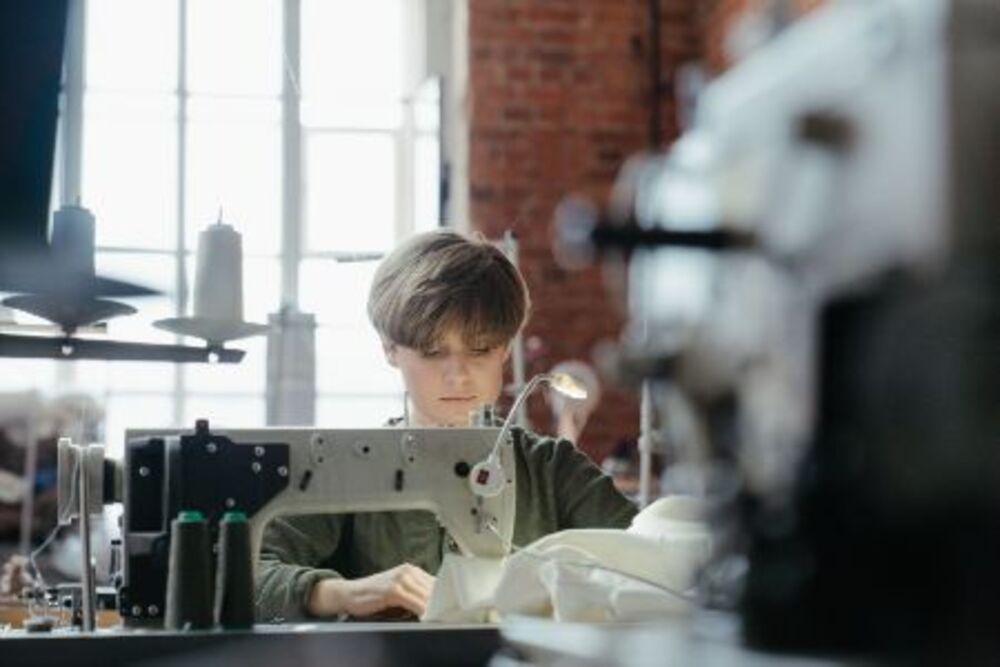Computerized embroidery machines provide an efficient and quick way to craft detailed designs quickly and effectively. Capable of handling an extensive variety of stitches, these machines also come equipped with features designed to minimize stitch-out errors.
Digitizing software converts vector images to an embroidery format compatible with machines. Additionally, this software offers options such as mirror-imageing, rotating and size editing for further user control.
Easy to use
Embroidery used to be considered solely the domain of grandmothers and housewives; however, thanks to computerized embroidery machines this art form has become accessible to everyone. These machines can stitch designs that would take your grandmother weeks by hand in just minutes using precise accuracy. Find out the best embroidery machine for beginners.
Computerized embroidery machines operate by reading data from a computer and receiving instruction to stitch a specific design, order threads correctly and trim threads as necessary. They can also duplicate designs quickly for increased efficiency and reduced costs.
Before beginning computerized embroidery machine use, make sure that you have a reliable internet connection and computer with at least 17-inch display. A larger screen makes navigating embroidery software much simpler; additionally it is recommended that you purchase full embroidery software program with comprehensive file management tools and clear previews.
Easy to maintain
Embroidery machines are complex pieces of machinery and more expensive than most household appliances. Therefore, it is crucial that you follow some key tips in order to keep your machine operating smoothly – this includes keeping embroidery supplies in good condition as well as oiling your machine properly.
Working with an embroidery machine requires using a computer with a 17″ screen at minimum, since anything smaller will make reading and viewing embroidery designs difficult. A larger display also makes navigating your machine’s menus much simpler.
Before beginning stitching, an embroidery machine needs to be informed of its design elements. This involves inputting needle numbers and color orders, to prevent overstitching threads too closely together that could result in failure of embroidery stitching. Furthermore, it is also crucial that one monitor the machine regularly while it operates.
Easy to customize
Computerized embroidery machines make creating designs easier than ever, creating designs in minutes that may have taken days to create by hand. Plus, editing capabilities let you personalize them before stitching onto materials; for instance, by adding more colors or text or even using different file formats!
An embroidery machine will allow you to craft reliable designs that won’t fade over time after multiple washes – something which is especially crucial when many embroidery projects involve fabric that customers intend to wear or use themselves.
The Brother PE535 embroidery and sewing machine is an excellent option for anyone searching for an easy-to-use machine with 80 built-in designs and nine fonts for monogramming, plus you can import your own custom designs through its USB port. Plus its 3.2″ colored LCD touchscreen on the right side lets you preview designs before embroidering them!
Durable
If you’re considering purchasing a computer embroidery machine, the Brother SE600 is an excellent option. While more costly than some options on this list, its excellent performance and large touchscreen allow for design editing – perfect for anyone just getting into embroidery! It makes the ideal machine for beginners wanting a reliable machine for starting out their journey in embroidery.
Step one in creating computerized embroidery designs involves digitizing vector drawings into editable formats using different embroidery software suites’ various methods for digitizing vector information into stitch objects and producing a design file that can be loaded onto an embroidery machine without loss of data.
Computerized embroidery machines don’t require as much skill to use than regular sewing machines; however, you still should possess basic embroidery knowledge. With just some practice you can turn even simple designs into professional-quality projects; just be sure to follow all instructions from your machine carefully!
